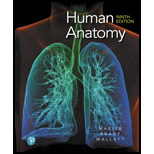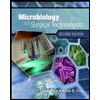
Concept explainers
To review:
The percentage of the total affected surface area of the body in the following conditions: the entire portion of the buttocks and the posterior trunk has burned, the entire portion of the lower limb has burned, and the entire front portion of the upper left limb has burned.
Introduction:
The injuries of the skin or tissues that occur due to heat, electricity, cold, friction, radiation, and chemicals are called burns. The severity or impact of burns depends upon the temperature of the burning substance or its surface. The burns are categorized into three types which are first-degree burns, second-degree burns, and third-degree burns.
Rule of nines is a method for the estimation of the extent of burning. It is normally calculated in percentages. In this rule of nine, the body is divided into distinct sections of 9 percent each or a multiple of 9 percent. The estimation of burn percent by the method of nine helps in transferring the patient to the appropriate burn unit for treatment.
According to the rule of nines, the surface area of the head and the neck is considered 9% of the total body surface area (BSA). Each leg and the entire back are considered 18% (each). The burn in the groin area is 1%. The surface area of the anterior and posterior trunk area is 36%, for anterior and posterior upper limb is 18% while for anterior and posterior lower limb is 36%. The area for the left and right buttock is 9%. The percentage of the total affected surface area of the body in the above-mentioned conditions are mentioned below:
1. The entire portion of buttocks and the posterior trunk has burned: By using the above information, the percentage of the posterior trunk will be 18% while for the right and the left buttocks it will be 4.5% each. So, the total percentage of the entire burnt portion like buttocks and posterior trunks is 27%.
2. The entire portion of the lower limb has burned: By using the above information, the percentage of the entire lower limb, which is burnt will be 18%.
3. The entire front portion of the upper left limb has burned: By using the above information, the percentage of the entire upper left limb which is burnt will be 4.5%. (percentage of the left limb is 9%, so for upper left limb and lower left limb it will be 4.5%).
Want to see the full answer?
Check out a sample textbook solution
Chapter 5 Solutions
Pearson eText Human Anatomy -- Instant Access (Pearson+)
- Which of the following is not a sequence-specific DNA binding protein? 1. the catabolite-activated protein 2. the trp repressor protein 3. the flowering locus C protein 4. the flowering locus D protein 5. GAL4 6. all of the above are sequence-specific DNA binding proteinsarrow_forwardWhich of the following is not a DNA binding protein? 1. the lac repressor protein 2. the catabolite activated protein 3. the trp repressor protein 4. the flowering locus C protein 5. the flowering locus D protein 6. GAL4 7. all of the above are DNA binding proteinsarrow_forwardWhat symbolic and cultural behaviors are evident in the archaeological record and associated with Neandertals and anatomically modern humans in Europe beginning around 35,000 yBP (during the Upper Paleolithic)?arrow_forward
- Describe three cranial and postcranial features of Neanderthals skeletons that are likely adaptation to the cold climates of Upper Pleistocene Europe and explain how they are adaptations to a cold climate.arrow_forwardBiology Questionarrow_forward✓ Details Draw a protein that is embedded in a membrane (a transmembrane protein), label the lipid bilayer and the protein. Identify the areas of the lipid bilayer that are hydrophobic and hydrophilic. Draw a membrane with two transporters: a proton pump transporter that uses ATP to generate a proton gradient, and a second transporter that moves glucose by secondary active transport (cartoon-like is ok). It will be important to show protons moving in the correct direction, and that the transporter that is powered by secondary active transport is logically related to the proton pump.arrow_forward
- drawing chemical structure of ATP. please draw in and label whats asked. Thank you.arrow_forwardOutline the negative feedback loop that allows us to maintain a healthy water concentration in our blood. You may use diagram if you wisharrow_forwardGive examples of fat soluble and non-fat soluble hormonesarrow_forward
- Just click view full document and register so you can see the whole document. how do i access this. following from the previous question; https://www.bartleby.com/questions-and-answers/hi-hi-with-this-unit-assessment-psy4406-tp4-report-assessment-material-case-stydu-ms-alecia-moore.-o/5e09906a-5101-4297-a8f7-49449b0bb5a7. on Google this image comes up and i have signed/ payed for the service and unable to access the full document. are you able to copy and past to this response. please see the screenshot from google page. unfortunality its not allowing me attch the image can you please show me the mathmetic calculation/ workout for the reult sectionarrow_forwardIn tabular form, differentiate between reversible and irreversible cell injury.arrow_forwardhelparrow_forward
 Comprehensive Medical Assisting: Administrative a...NursingISBN:9781305964792Author:Wilburta Q. Lindh, Carol D. Tamparo, Barbara M. Dahl, Julie Morris, Cindy CorreaPublisher:Cengage Learning
Comprehensive Medical Assisting: Administrative a...NursingISBN:9781305964792Author:Wilburta Q. Lindh, Carol D. Tamparo, Barbara M. Dahl, Julie Morris, Cindy CorreaPublisher:Cengage Learning Microbiology for Surgical Technologists (MindTap ...BiologyISBN:9781111306663Author:Margaret Rodriguez, Paul PricePublisher:Cengage Learning
Microbiology for Surgical Technologists (MindTap ...BiologyISBN:9781111306663Author:Margaret Rodriguez, Paul PricePublisher:Cengage Learning Human Physiology: From Cells to Systems (MindTap ...BiologyISBN:9781285866932Author:Lauralee SherwoodPublisher:Cengage Learning
Human Physiology: From Cells to Systems (MindTap ...BiologyISBN:9781285866932Author:Lauralee SherwoodPublisher:Cengage Learning





